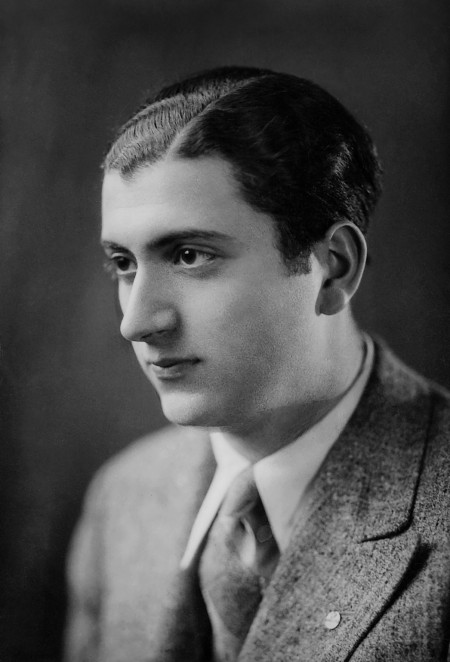
2 December 1909, Rákospalota – 15 May 1988, Leipzig
György Garay was born on December 2, 1909 at Rákospalota. He began his studies at the Academy of Music in 1918 with the guidance of József Bloch (at the preparatory class), then became a student of Oszkár Studer from 1921. He spent the last year in Jenő Hubay's class and earned his artist degree as his student in 1926. In the same year he also gave a public recital in Vienna, the domestic debut in Budapest came only a year later in 1927.
He became known primarily as a chamber musician at the beginning of his artistic career: he was a member of the Magyar Trió (Hungarian Trio) between 1927 and 1930, then became first violinist in the Garay Quartet between 1930 and 1933 – but the several quartet performances under the guidance of Leó Weiner at the Academy of Music can be mentioned as an important antecedent of these successes. From the 1930s his domestic and international performances as a soloist became frequent, too.
During World War II he was a member of the Fővárosi Zenekar (Orchestra of the Capital) from 1940, and then became principal violinist at the orchestra of the State Opera between 1945 and 1951. He began teaching at the Academy of Music in this period: being a lecturer in the academic year of 1949/1950, but became full professor from the next academic year and then on he was an ordinary teacher at the Academy during a decade. Parallel with that he was principal violinist at the State Concert Orchestra from 1951.
Contrary to these professional successes according to the concordant testimonies of contemporary criticisms the art of György Garay was to mature just after that, at the end of the 1950s. Sándor Jemnitz praised his ‘new disciplined classicistic style' then, while according to András Pernye his playing was exempt of ‘any theatricality, externality, bombastic effects and seeks primarily to realize the text of the score faithfully. Primarily it is the music that impacts in his performance – his personality lies just in his asceticism.' Reading this characterization, it seems to be almost natural that the performance of 20th century and contemporary works became the center of György Garay's artistic work. Premieres and radio recordings in the 1950s of the works of Sándor Veress, Béla Tardos, Rezső Sugár, György Ránki, András Mihály and the above cited Sándor Jemnitz and other contemporary composers are attached to his name.
György Garay disappeared suddenly from the concert halls at the summit of his artistic successes in the season of 1960/1961. He became principal violinist of the MDR Sinfonieorchester in Leipzig, and although he spent the summers regularly still at home, he performed just rarely at those times. However he continued his versatile work in Germany: he taught regularly at the music college of Leipzig, gave master classes in Weimar, took part in further recordings and continued his work as an editor, now at publisher Peters, which he had been doing earlier at the Zeneműkiadó state company. Neither did he give up contemporary music, as he mentioned proudly: ‘I'm working at perhaps the most excellent, more specifically the technically most outstanding orchestra of the GDR, only our ensemble plays modern music really well in the country. We premiere several compositions of composers of today' He was proud rightly of his instrument, the Stradivari he purchased, as well, on which he played in his last years. He died in his seventy-ninth year of his life on May 15, 1988.
M. B.


